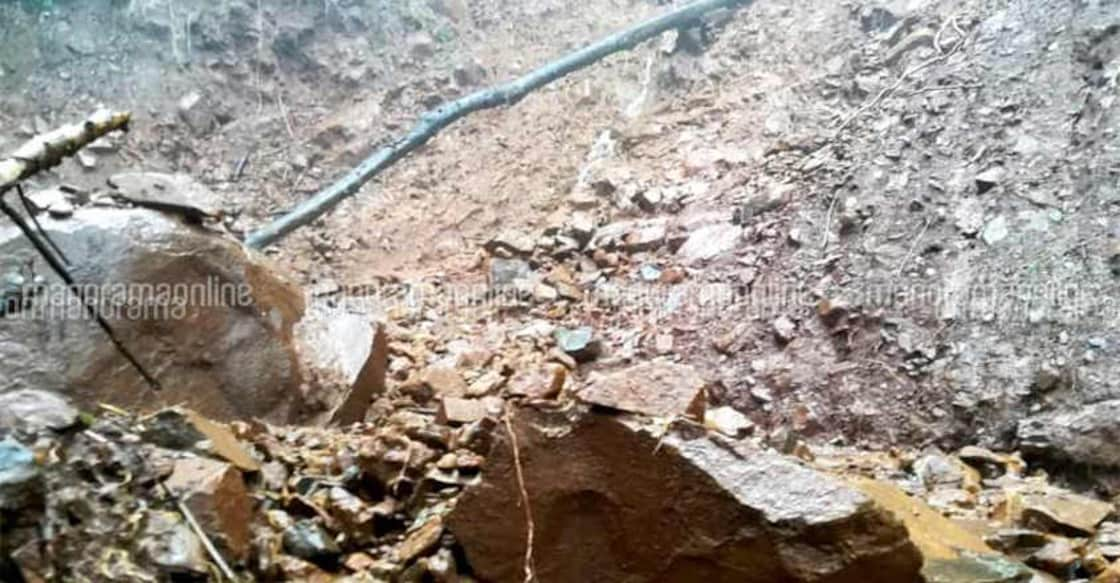Did quarries trigger Kannur landslides?

Mail This Article
What little assets they managed to muster all their life have just gone down the drain in a jiffy. Literally! A revisit to the scene continues to give shudders to residents of Kannur living by the lower tracts of the hills; their land and properties vanished in landslips triggered by pounding rains.
No less than 27 places in the rugged regions of the upstate district have reported landslides. In the process, the belt comprising Ayyankunnu, Aralam and Ulikkal panchayats lost not just several houses, but two lives as well. Particularly disastrous was a landslip at Chappamala in Kottiyur panchayat. There, land, along a stretch of 5.6 kilometre, washed away in the monsoon fury.
But were all of these purely instances of natural calamity? Not necessarily. For instance, Ayyankunnu had been converted into a fragile slice of topography following unregulated quarry operations in the area. A hill in this remote village has four quarries in operation. Local people suspect that the recent spree of four landslips in Ayyankunnu has more to do with man’s greed than nature’s fury.
How land slips
The rugged eastern belt of Kannur in the state’s northeast has three layers of soil making its earth. Laterite stones on top, clay below and then granite deposits. The top layer has a texture that permits rainwater to percolate. Filtering down the water in increasing volumes applies pressure on the bottom layers of the earth.
This leads to a situation where the water earns the propensity to gush upwards with great force. That would lead the top layer of the earth to slide. While gushing downward to lower areas, these waters swallow everything on their way.
Quarry trigger
If the land is sloping, then even the slightest of earth’s movements can perhaps trigger a landslide. It’s not just the pressure rainwater puts on the lower layers of soil that can cause landslips. Quarries in the area too can. For, the blasts that split the granite rocks can leave cracks in the third layer of earth in the region.
The cracks leave lines parallel to the surface of the earth. Landslips thus caused can be even more disastrous. When stones mix with rainwater, the havoc brought can be massive.
Below mining spots
Four landslips in a single day devastated Parakkamala, uprooting huge boulders, which rolled down and virtually invaded farmlands. Roads and bridges were rendered unusable. The Parakkamala hill had four quarries operating atop it. All of them were busy with mining on the eve of the disaster. One of the points of origin of a landslip has been found just below a quarry.
In its neighbourhood, there are five quarries — in Kottiyoor, Kelakam and Kanichar panchayats. Places there, too, reported landslips. But the landslide in Kottiyoor’s Chappamala has been attributed to a water-logging along the Wayanad hills, the valley of which is dotted by these villages.
In 2004, when water rose in Peryamekhala of the Wayanad hills, Chappamala suffered landslides. Water gathering stagnant in quarry pits for long adds to the pressure of the earth below, acting as a potential trigger for landslips. The latest round of landslip at Venthachapa near Karikottakkari was apparently triggered by an adjoining quarry. The calamity destroyed a house completely.
A report ignored
Ayyankunnu had in 2007 June too experienced landslips. This prompted the then Kannur district collector, Ishita Roy, to invite the Geological Survey of India to carry out a study of the region. The team of experts found the area extremely fragile, warranting high-level ecological care. Protection walls and afforestation were prescribed as remedial measures. None of these was followed up or implemented. Worse, new quarries sprang up in the belt. No wonder, the region has faced yet another major tragedy.
Agreed, it is heavy rains that accentuate a region’s potential for landslip. But then, such a calamity can be avoided if the lower layers of the earth are left with its natural capacity to absorb additional water. Quarries sprouting in big numbers won’t permit peace in the region.
(The writer is head of the department of geology, Government College, Kasaragod)

